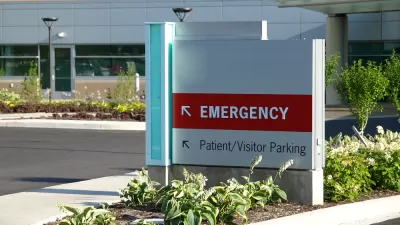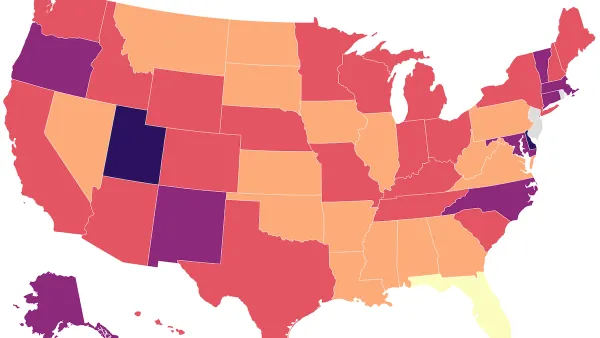Inequities in healthcare are linked to inequities in urban planning, a public health researcher argues.

[Updated January 18, 2019] For Green Inequalities, the blog of the Barcelona Laboratory for Urban Environmental Justice and Sustainability, public health researchers Helen Cole and Emily Franzosa explore how access to hospitals and medical care fit into cities' ongoing move toward gentrification. "In much the same way that urban gentrification continues to see the exclusion of poorer residents from once-disinvested and now newly desirable neighborhoods, so are these residents increasingly excluded from accessing healthcare and the health care jobs in these neighborhoods that have long been a steady source of employment," according to the article.
One problem is that large medical companies—sources of both medical services and local employment—are shuttering full-service hospitals in favor of expensive practices serving higher-income clientele in gentrifying areas. "These shifts in the provision and cost of basic healthcare reflect the same patterns as those in the cost of living in gentrifying neighborhoods: when goods and services are increasingly provided for the new, wealthy class, they often leave behind less affluent residents," according to the article.
For a case study, Cole and Franzosa turn to Dallas, Texas, where extreme income inequality and high rates of uninsurance collide. She also points to the successful campaign by Chicago activists to open a trauma center in the South Side—the area's first in 30 years.
[Updated to include both researchers credited for the project.]
FULL STORY: The Gentrification of American Healthcare

Planetizen Federal Action Tracker
A weekly monitor of how Trump’s orders and actions are impacting planners and planning in America.

San Francisco's School District Spent $105M To Build Affordable Housing for Teachers — And That's Just the Beginning
SFUSD joins a growing list of school districts using their land holdings to address housing affordability challenges faced by their own employees.

The Tiny, Adorable $7,000 Car Turning Japan Onto EVs
The single seat Mibot charges from a regular plug as quickly as an iPad, and is about half the price of an average EV.

Seattle's Plan for Adopting Driverless Cars
Equity, safety, accessibility and affordability are front of mind as the city prepares for robotaxis and other autonomous vehicles.

As Trump Phases Out FEMA, Is It Time to Flee the Floodplains?
With less federal funding available for disaster relief efforts, the need to relocate at-risk communities is more urgent than ever.

With Protected Lanes, 460% More People Commute by Bike
For those needing more ammo, more data proving what we already knew is here.
Urban Design for Planners 1: Software Tools
This six-course series explores essential urban design concepts using open source software and equips planners with the tools they need to participate fully in the urban design process.
Planning for Universal Design
Learn the tools for implementing Universal Design in planning regulations.
Smith Gee Studio
City of Charlotte
City of Camden Redevelopment Agency
City of Astoria
Transportation Research & Education Center (TREC) at Portland State University
US High Speed Rail Association
City of Camden Redevelopment Agency
Municipality of Princeton (NJ)




























